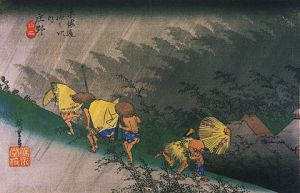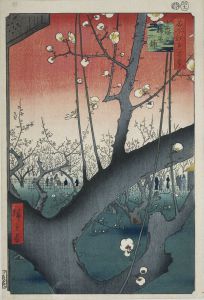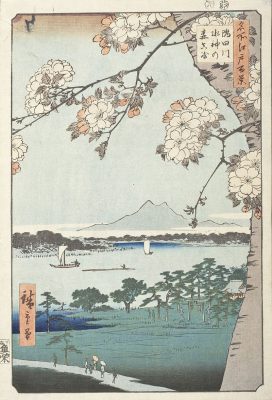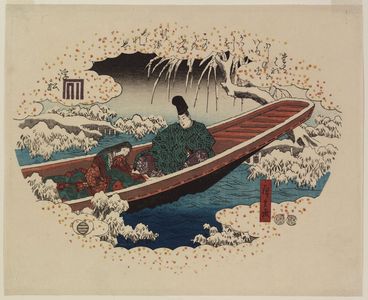Ando Hiroshige and Japan art: Sexuality, landscapes, and becoming a Buddhist Monk
Lee Jay Walker
Modern Tokyo Times

Internationally, Japanese art is known for the richness of various cultural angles during the Edo Period and early Meiji era. Following on from this, few Japanese artists are so internationally famous like Ando Hiroshige (1797-1858). Despite this, the art of Hiroshige is much more diverse than the vast majority of people seem to realize. Of course, this doesn’t apply to art specialists. Therefore, in a sense, the most famous art produced by Hiroshige is a mirage.

One extreme subject area that would have felt completely out of place in traditionally Christian Europe and the Islamic world – is the artistic theme of shunga. This art theme is based on open sexual depictions that seem at odds with the Hiroshige that is often portrayed outside of Japan. Yet, despite the explicit depictions of sexuality based on shunga, this in itself is a cultural mirage that is often misunderstood outside of Japan. Equally, shunga was not solely based on art; it was also a powerful economic angle that sold well to lay people during this period of Japanese history. Also, the cultural traits of sexuality and different nuances in shunga, all equate to different thought patterns and meanings.

In another article, I state, “Collectively, Hiroshige and Katsushika Hokusai helped to generate great interest in Japanese art, albeit if this influence grew after their respective deaths. Of course, many other famous artists have been born in Japan. Therefore, the rich nature of Japanese art is clear for all to see. Indeed, many different art forms generated within this country – and the influences of China before the Meiji Restoration of 1868 and the growing impact of European art after this period– is a wonder to behold. Also, Japanese art influenced many great international artists and this notably applies to the late nineteenth century and early twentieth century – in relation to Impressionism.”

Shunga is a million miles away from various areas that impacted greatly on Hiroshige. For example, from the religious and philosophical angle, then the influences of Buddhism, Confucianism, Shintoism, and Taoism all impacted to various degrees. Similarly, the nuance of Japanese art in relation to time, color schemes, nature, space, and symbolism all pulled at the artistic soul of Hiroshige – just like it did to other Japanese artists. However, with Hiroshige belonging to the world of ukiyo-e, rather than high cultural angles that impacted on other Japanese artistic movements, then he was free to explore a plethora of subjects.

I allude to the complexity of Hiroshige – and high culture and the reality of shunga – in a past article. I utter, “Within the visions of serenity, sublime nature, and stunning landscapes, you have multi-dimensional realities that may clash in other cultures. This applies irrespective if “Eastern” or “Western” thought patterns. Hence, open sexuality and conservatism within the same “inner-self” are based on thought patterns that are difficult to grasp from a non-Japanese point of view. If this isn’t understood, then confusions will materialize with regards to the duality of such extremes within the art of Hiroshige – and many other famous ukiyo-e artists.”

Ultimately, Hiroshige will be remembered for his stunning landscapes. This notably applies to the Fifty-three Stages of the Tokaido Road, the Eight Views of Lake Biwa, the Hundred Views of Edo, and other amazing landscapes. However, the real beauty of Hiroshige – in relation to his art and on becoming a Buddhist monk – is that the plethora of artistic subject matters all energized his spiritual inner-self, that came out in the latter stages of his life. Also, this is the beauty of Buddhism in this period of Japanese history because the complexity of ukiyo-e and the nuance of shunga did not hinder Hiroshige from becoming a Buddhist monk. On the contrary, the openness of Buddhism and his love of Japanese folklore all naturally fused together, whereby shunga became just a matter of fact and gradually waned before the transmigration of his soul.

Modern Tokyo News is part of the Modern Tokyo Times group
DONATIONS to SUPPORT MODERN TOKYO TIMES – please pay PayPal and DONATE to sawakoart@gmail.com
http://moderntokyotimes.com Modern Tokyo Times – International News and Japan News
http://sawakoart.com – Sawako Utsumi personal website and Modern Tokyo Times artist
https://moderntokyonews.com Modern Tokyo News – Tokyo News and International News
http://global-security-news.com Global Security News – Geopolitics and Terrorism
PLEASE JOIN ON TWITTER
https://twitter.com/MTT_News Modern Tokyo Times
PLEASE JOIN ON FACEBOOK
https://www.facebook.com/moderntokyotimes